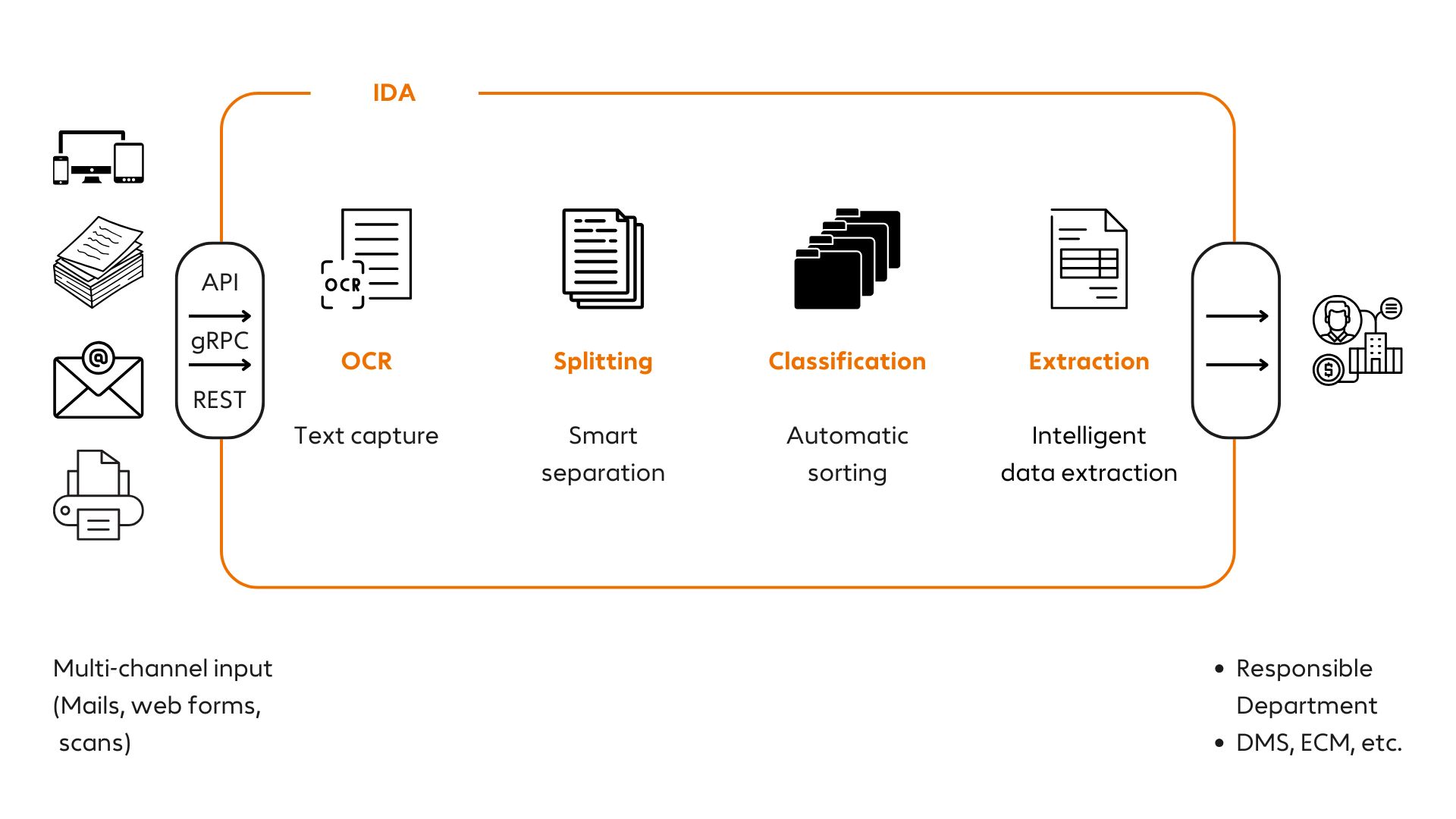Digital Inbox
Efficient Management of Incoming Mail

- 1
- 2
- 3
- 4
- 5
The digital revolution is transforming the workplace—especially in the realm of document management. A digital inbox offers businesses a modern solution to optimize the processing of incoming documents while saving valuable resources. But what exactly does this term mean, and what benefits does this technology bring?
What is a Digital Inbox?
A digital inbox is a fundamental process for capturing, processing, and forwarding incoming documents—whether in digital or physical form. The core idea is to consolidate all information in one place, capture it in a structured manner, and then efficiently route it to the appropriate areas within the organization. Technologies such as Optical Character Recognition (OCR) and Intelligent Character Recognition (ICR) are employed to automatically read and process content from documents.
The Benefits of a Digital Inbox
Time Savings and Increased Efficiency
It significantly reduces manual tasks. Documents no longer need to be physically sorted or distributed. Instead, they are automatically captured, classified, and routed to the correct departments or systems. This saves time and minimizes errors.
Cost Reduction
Automation helps reduce personnel costs and minimizes the use of resources like paper or storage space. At the same time, the quick availability of information enables more efficient workflows.
Improved Traceability
With digital logging, every document’s processing is transparent and traceable. This simplifies compliance requirements and enhances security in document management.
The Digital Inbox Process

1 – Input from Various Channels
Documents from various sources, including emails, physical papers (which need to be scanned first), faxes, or other electronic communication channels, can be processed efficiently.
2 – Document Capture
Technologies like OCR and ICR enable the automatic recognition and capture of texts, handwriting, checkboxes, and barcodes. This converts document content into structured data.
If combined PDFs contain multiple documents, they can be automatically split. The documents are then classified into categories such as invoices, contracts, or orders.
4 – Data Extraction
Relevant data is extracted using technology to prepare essential content for further processing. This includes invoice amounts, customer names, or contract numbers, for example.
5 – Forwarding Results
The results of classification and data extraction are transferred to appropriate systems such as Document Management Systems (DMS), Enterprise Content Management (ECM) systems, and more. These systems enable seamless integration into existing business processes. Alternatively, documents can be directly forwarded to the responsible departments to support specific tasks efficiently.
Conclusion – Digitization as the Key to Efficiency
A digital inbox is more than just a technical novelty—it’s a vital component for the digitization of business processes. By automating and optimizing document management, companies can save time and costs while enhancing the quality of their workflows.
Let’s Get Started Together
Do you have questions or want to learn more about how a digital inbox can benefit your company? Feel free to contact us for more information or book a personalized demo with our AI experts. Discover how you can optimize your processes. Schedule your appointment today!
